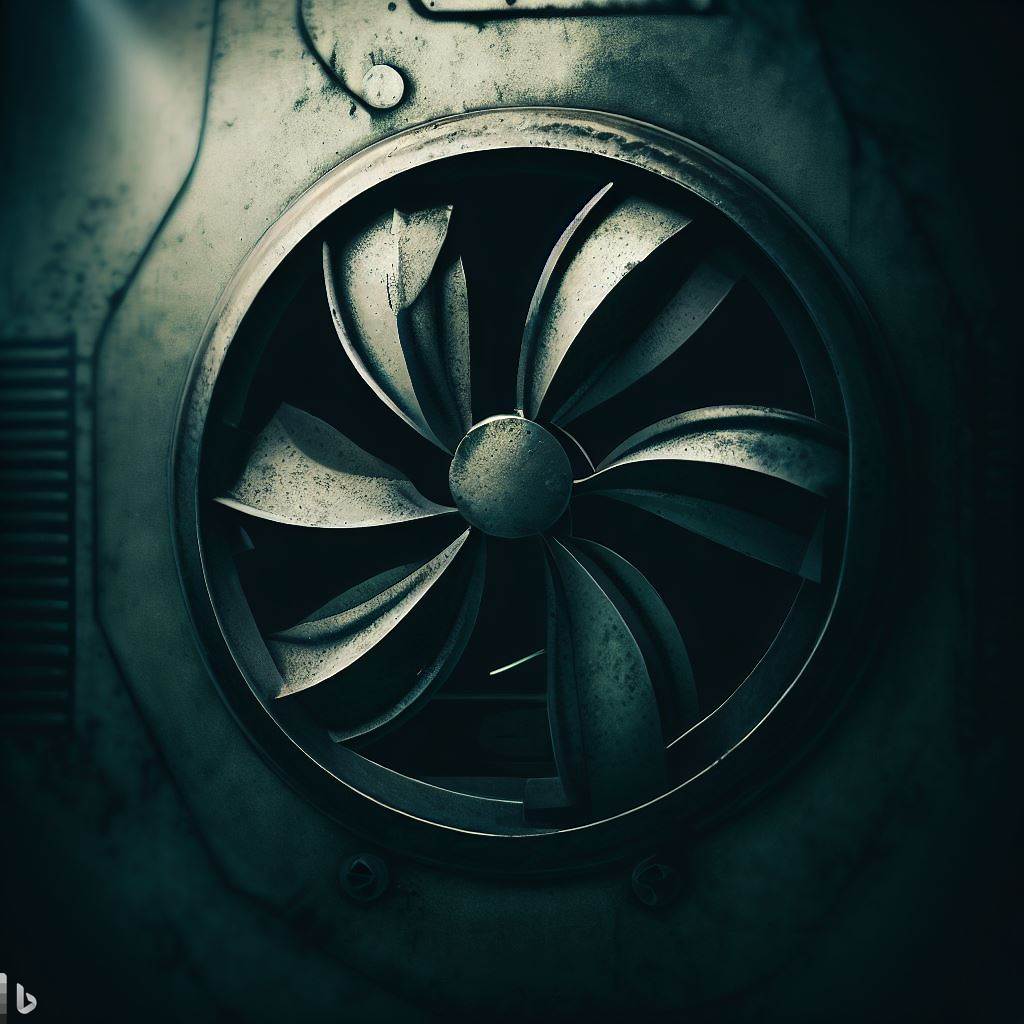Table of Contents
Hot tub heater elements are essential for heating up your spa. If it’s not functioning, it can cause problems like burning out or no heat. Here’s how to test and replace it!
- First, power off and remove the access panel. Use an ohm meter to check for continuity. If there is no reading, you need a new element.
- To replace it: drain the water, disconnect all power sources, remove any necessary parts, and note the positions of the electrical terminals. Clean the heating housing before installing the new element. Tighten or loosen the terminal nuts based on their original positions. Reassemble and fill with water to test.
Pro Tip: Regular maintenance can help prolong its lifespan. Clean and inspect your hot tub, maintain proper water chemistry, and prevent scale build-up.

Key Notes
- Power vents are devices used to remove hot air, moisture, and odors from a space by creating a pressure difference.
- They are commonly used in homes, commercial buildings, and industrial settings to improve air quality and ventilation.
- Power vents can be installed in various locations, such as roofs, walls, or windows, depending on the specific needs of the space.
- These vents are typically powered by electricity and can be controlled manually or automatically.
- The main benefits of power vents include improved indoor air quality, reduced humidity levels, and the prevention of mold and mildew growth.
- They can also help to regulate temperature and reduce energy consumption by allowing for better airflow and ventilation.
- Power vents come in different sizes and capacities, so it is important to choose the right one for the specific space and ventilation requirements.
- Regular maintenance and cleaning of power vents are essential to ensure their optimal performance and longevity.
- It is recommended to consult with a professional or HVAC technician for proper installation and maintenance of power vents.
Understanding the Power Vent System
Hot tub owners should be aware of their power vent systems’ special features. Understanding and following the manufacturer’s guidelines can help you get the best performance out of it. Certified professionals should perform regular servicing to keep it running efficiently.
It’s important to take care of your power vent system. Neglecting it can cause heater malfunctions, energy waste, and even safety issues. To make sure your hot tub is running optimally and your heater lasts, pay attention to this crucial component.
Benefit from the advantages of a power vent system, such as improved energy efficiency, noise reduction, and safety. Don’t miss out on all the good stuff it offers, and make sure to give it the attention it deserves!
Troubleshooting and Testing the Hot Tub Heater Element
Having trouble with your hot tub’s heater element? Here’s a helpful guide to troubleshooting and testing it:
- Check for Power: Make sure your hot tub has power by checking the circuit breaker or GFCI outlet supplying electricity to the heater.
- Inspect the Heating Element: Look for signs of damage, such as corrosion, burnt wires, or broken terminals. If you find any, it may be time to replace the heater element.
- Test for Continuity: To figure out if the heating element is working properly, use an ohm meter. Disconnect the power and detach the wires from the heater’s terminals. Put each probe of the ohm meter on one terminal and check the reading. It should be within a specific ohm range (check your hot tub’s manual).
- Verify Voltage: Reconnect power and turn on the heater. Use a multimeter to measure the voltage at each terminal of the heating element. This will tell you if enough electrical current is reaching the element.
- Inspect Other Components: If there’s voltage but no heat, check other parts like fuses, relays, or pressure switches. Replace any broken ones.
- Consider Professional Help: If you’re unsure how to test and troubleshoot, hire a qualified technician. They can diagnose and repair complex issues with your hot tub’s heater system.
Regular maintenance and vigilance are key to keeping your hot tub in top shape. Address issues promptly to avoid expensive repairs.
Replacing the Hot Tub Heater Element
When it comes to replacing the hot tub heater element, there are a few key steps you should follow. To ensure a smooth process, here’s a 4-step guide:

Refill and test your new heater element. Always be careful when working with electricity!
Additionally, it’s wise to consult your hot tub manufacturer’s manual or customer service for detailed instructions.
Improper installation can lead to malfunctioning or damage, so take extra care to make sure it’s done right.
Follow these steps and seek guidance from professionals to replace your hot tub heater element successfully.
Checking the Hot Tub Heating Element
It’s key to regularly inspect your hot tub’s heating element. Here’s a step-by-step guide to help you out:
- Power Off: Always turn off the power before doing any work on your hot tub. That’ll keep you safe from electrical accidents.
- Find the Heater: It’s usually in the heater housing connected to the circuit board. You may have to remove the cover or access panel to get to it.
- Disconnect Power Leads: Carefully disconnect the power leads from the heater terminals. Wear insulation before touching any electrical components.
- Test Continuity: With an ohm meter, touch one test lead to each of the heater terminals. If there’s an open circuit or infinite reading, the heating element needs replacing.
- Look for Damage: Also check the heating element for loose wires, melted parts, or corrosion. Replace it if you see any damage.
- Connect and Test Again: After replacing, reconnect the power leads to their terminals. Check all connections are secure before turning the power back on.
Also, make sure you have the right water chemistry and balance in your hot tub. Poor chemistry can damage the heating element over time.
A friend of mine learned the importance of regularly inspecting and testing the heating element the hard way. He had multiple burnouts due to neglecting regular maintenance checks. Don’t make the same mistake; take care of your hot tub properly.
Understanding Common Problems with Heater Elements
Heater elements in hot tubs can have common problems. These can range from burnt-out elements to faulty circuit boards. It’s important to know these problems to troubleshoot and address them.
- Burning out: This can be from imbalances in water chemistry, high limits set too high, or too much flow.
- Not heating: A malfunctioning high-limit switch or thermostat can stop it from reaching the desired temperature.
- No heat: Usually a blown fuse or tripped circuit breaker is the cause.
- Low water flow: This is often due to clogged filters, blocked valves, or air locks in the plumbing.
- Faulty pressure switch: This detects water flow and activates the heater. If it doesn’t work, the heater won’t turn on.
- Short circuit or open circuit: Wiring issues can cause the element to stop working.
To help prevent and fix these problems:
- Check water chemistry and keep it balanced.
- Set high limits and temperature according to manufacturer instructions.
- Check fuses and reset any tripped breakers.
- Clean or replace filters to promote water flow.
- Look for leaks or blockages in the plumbing.
- Inspect wiring and replace broken wires or faulty parts.
Follow these tips to help maintain your hot tub’s heater. Regular maintenance and attention to detail are the keys to its long-term performance. It’s as tough as trying to heat a cup of coffee in Antarctica!

Maintenance and Care for Hot Tub Heaters
Maintaining your hot tub heater is key to optimal performance and long life. Here’s what to do:
| Maintenance Task | Frequency | Description |
|---|---|---|
| Clean Filter Cartridges | Every 1-2 weeks | Remove, rinse, then clean with filter cleaner. |
| Check Water Flow | Weekly | Inspect pressure/flow switches. |
| Test Water Chemistry | Weekly | Test pH, alkalinity, chlorine/bromine. Adjust accordingly. |
| Inspect Heater Housing | Monthly | Look for damage/leaks – replace if needed. |
| Check Electrical Connections | Monthly | Tighten/loosen terminal nuts. |
| Test Heater Element | Annually | Use ohm meter – replace if needed. |
Be careful to avoid dry-firing the heater. This happens when water flow is insufficient or levels are low. It can damage the heating element.
My friend found out the hard way – they neglected maintenance, resulting in a burned-out element and costly repairs.
By taking care of your hot tub heater, you can enjoy warm, relaxing soaks for years to come.
Frequently Asked Questions
Q1: How do I test a hot tub heater element?
A1: To test a hot tub heater element, you can use an ohm meter. First, turn off the power to the hot tub. Then, disconnect the heater wires and use the ohm meter to measure the resistance across the heater element terminals. If the reading is within the manufacturer’s specified range, the heater element is functioning properly.
Q2: Why does my hot tub heater element keep burning out?
A2: There are several reasons why a hot tub heater element may burn out frequently. One possible cause is a high level of mineral buildup, which can lead to overheating. Another reason could be a voltage issue, such as a power surge or fluctuation. It’s also important to ensure that the water chemistry is balanced to prevent corrosion and damage to the heater element.
Q3: How do I replace a hot tub heater element?
A3: To replace a hot tub heater element, first, ensure that the power is turned off. Next, drain the hot tub and disconnect the heater wires. Remove any clamps or brackets securing the element and carefully slide it out of the heater housing. Install the new element by connecting the wires, securing it in place, and refilling the hot tub before turning the power back on.
Q4: How can I check if a hot tub heating element is working?
A4: To check if a hot tub heating element is working, you can perform a visual inspection and use an ohm meter. Look for any signs of physical damage to the element, such as cracks or breaks. Then, using the ohm meter, measure the resistance across the element terminals. If the reading is within the specified range, the heating element is likely functioning properly.
Q5: What are some common problems with hot tub heater elements?
A5: Common problems with hot tub heater elements include burned-out elements, mineral buildup, and electrical issues. Improper water chemistry, inadequate water flow, and insufficient insulation can also contribute to heater problems. Regular maintenance, proper water care, and prompt troubleshooting can help prevent and address these issues.
Q6: How can I contact customer service for assistance with my hot tub heater?
A6: To contact customer service for assistance with your hot tub heater, visit our website and navigate to the “Contact Us” page. There, you will find contact information, including a phone number and email address, where you can reach our knowledgeable support team for any questions or concerns you may have.
Conclusion
In conclusion, testing and replacing a hot tub heater element needs caution. An ohm meter must be used to check for open or short circuits in the heating coil. Connections must be secure and the high-limit switch must work.
Keeping correct water chemistry and cleaning filter cartridges can stop scale buildup. If a replacement is essential, choose a stainless steel element with an outer sheath for durability.
Being familiar with the spa control system and knowing error codes can help diagnose heater issues. Maintenance such as examining for leaks or loose connections should be done for optimal performance.
Pro Tip: To keep your hot tub heating well, fix the temperature at a reasonable level. Don’t make it too high. This will lessen the strain on the heating element and lengthen its lifespan.
